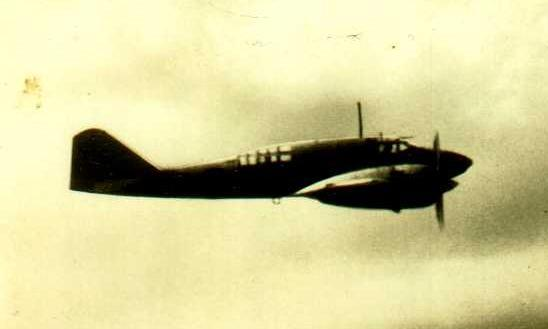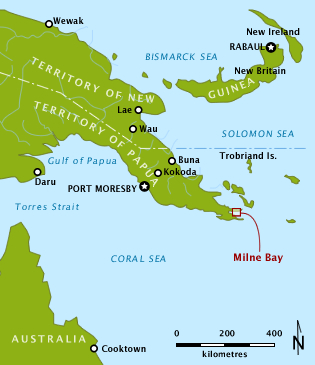
This tweet thread is the last of 5 that has reviewed & evaluated FEAF's ATIG Report No. 153 Japanese Radar Countermeasures & covers page 3 in the section named the "Actual Operational Use of RCM Equipment By The Japanese Army & Navy - Part B"
1/
1/

Page 3 of that section covers the efforts of the IJAAF "Radar Expeditionary Section" in combat at Okinawa in the period from June thru Aug 1945.
Most radar countermeasures equipment was flown in Mitsubishi Ki-67 Hiryū (飛龍, "Flying Dragon"; Allied reporting name "Peggy")
2/
Most radar countermeasures equipment was flown in Mitsubishi Ki-67 Hiryū (飛龍, "Flying Dragon"; Allied reporting name "Peggy")
2/

14. On 20 June 1945 a IJAAS RCM project called "the Radar Expeditionary Section" was sent to Kyushu to combat test a suite of RCM equipment including the TAKI 4, 5, 8, 8, 23, and 40. It was attached to the 60th Fighter Group (Reconnaissance) of the 6th Air Army based at...
3/
3/

Kengun-Kummoto.
The RCM project was commanded by Major Igato with the assistance of Capt. Uji, who had designed the TAKI 8, 23, and 40.
[Note: Kengun the city, Kummoto the airfield, & recon groups usually flew twin engine Mitsubishi Ki-46-II Dinah.]
4/
The RCM project was commanded by Major Igato with the assistance of Capt. Uji, who had designed the TAKI 8, 23, and 40.
[Note: Kengun the city, Kummoto the airfield, & recon groups usually flew twin engine Mitsubishi Ki-46-II Dinah.]
4/

15. American bombing of Kengun-Kummoto destroyed most of the aircraft equipped with TAKI equipment with the exception of three Ki-67 Peggy bombers carrying Taki-6 and Taki-40 gear.
Note: Kummoto was the home airfield the “Giretsu” Giretsu Special Forces Unit.
5/


Note: Kummoto was the home airfield the “Giretsu” Giretsu Special Forces Unit.
5/



For more on the “Giretsu” Combined Special Forces Airborne Unit, see this link:
sofrep.com/specialoperati…
6/
sofrep.com/specialoperati…
6/

The date of the air raids that destroyed those RCM equipped Ki-67 Hiryū Army Type 4 Heavy Bomber" (四式重爆撃機) makes it likely the attackers were USN Carrier or TAF 10th Army planes from Okinawa that did the destruction as B-29 attacks on Kyushu air fields had ended.
7/
7/

16. The three Ki-67 flew a sortie over Okinawa on 5 Aug 1945 and plotted four U.S. radars with frequencies at 100 Mhz and 110Mhz, (SCR-270 EW radars) plus two at 270Mhz and 280 Mhz (SCR-268 search light radars).
8/



8/




Note: The reported SCR-270 by the IJAAS were likely correct.
There were also several USMC SCR-527 ground control intercept (GCI) radars in that 200Mhz(+) band including ones on the Northern tip of Okinawa and Ie Shima.
See the Operation Iceberg photos and map.
9/



There were also several USMC SCR-527 ground control intercept (GCI) radars in that 200Mhz(+) band including ones on the Northern tip of Okinawa and Ie Shima.
See the Operation Iceberg photos and map.
9/




17. The IJAAF reports the one Ki-67 with the Taki-5 homed on and destroying two SCR-270 radars while the two Taki-23 planes jammed the SCR-268.
Note: Neither the Ryukyus based USMC Air Warning Squadrons nor the Marine AA battalions reported a SCR-270 destroyed. Jamming of...
10/

Note: Neither the Ryukyus based USMC Air Warning Squadrons nor the Marine AA battalions reported a SCR-270 destroyed. Jamming of...
10/


...US Army anti-aircraft artillery SCR-268 searchlight control radars was not in any 10th Army document I've reviewed.
No battalion, group or the US Army AA brigade at Okinawa turned in a August 1945 monthly report due both VJ-day & the destruction by Oct 45 typhoon.
11/
No battalion, group or the US Army AA brigade at Okinawa turned in a August 1945 monthly report due both VJ-day & the destruction by Oct 45 typhoon.
11/

18. All three remaining Ki-67 w/RCM gear were destroyed by US air attack on 13 Aug 1945.
19. The Taki-40 had helped all three Ki-67 avoid American night fighters when all the other planes that attached night -- 5 Aug 1945 -- were destroyed by American night fighters.
12/

19. The Taki-40 had helped all three Ki-67 avoid American night fighters when all the other planes that attached night -- 5 Aug 1945 -- were destroyed by American night fighters.
12/


Note: I cannot confirm this as there are no August 1945 monthly reports from the USMC night fighter sqdns, AWS sqdns & AA btns due to the surrender.
The VJ-Day surrender saw most USMC organizations picking up reporting again in September or October 1945 after the Typhoon.
13/
The VJ-Day surrender saw most USMC organizations picking up reporting again in September or October 1945 after the Typhoon.
13/
Now, let's see if Twitter will let me post the 3rd page of "Actual Operational Use of RCM Equipment By The Japanese Army & Navy - Part B" and the equipment table that goes with it.
14/

14/


Now, Administrivia!
This was thread one in this ATIG Report No. 153 Japanese Radar Countermeasures series.
15/
This was thread one in this ATIG Report No. 153 Japanese Radar Countermeasures series.
15/
https://twitter.com/TrentTelenko/status/1369805884994428930
This was thread two in this ATIG Report No. 153 Japanese Radar Countermeasures series.
16/
16/
https://twitter.com/TrentTelenko/status/1370485646515707912
This was thread three in this ATIG Report No. 153 Japanese Radar Countermeasures series.
17/
17/
https://twitter.com/TrentTelenko/status/1372618125674479617
This was thread four in this ATIG Report No. 153 Japanese Radar Countermeasures series.
18/
18/
https://twitter.com/TrentTelenko/status/1373075715495763975
And this is the last tweet in thread five in this ATIG Report No. 153 Japanese Radar Countermeasures series.
/End
/End
@threadreaderapp unroll
• • •
Missing some Tweet in this thread? You can try to
force a refresh







